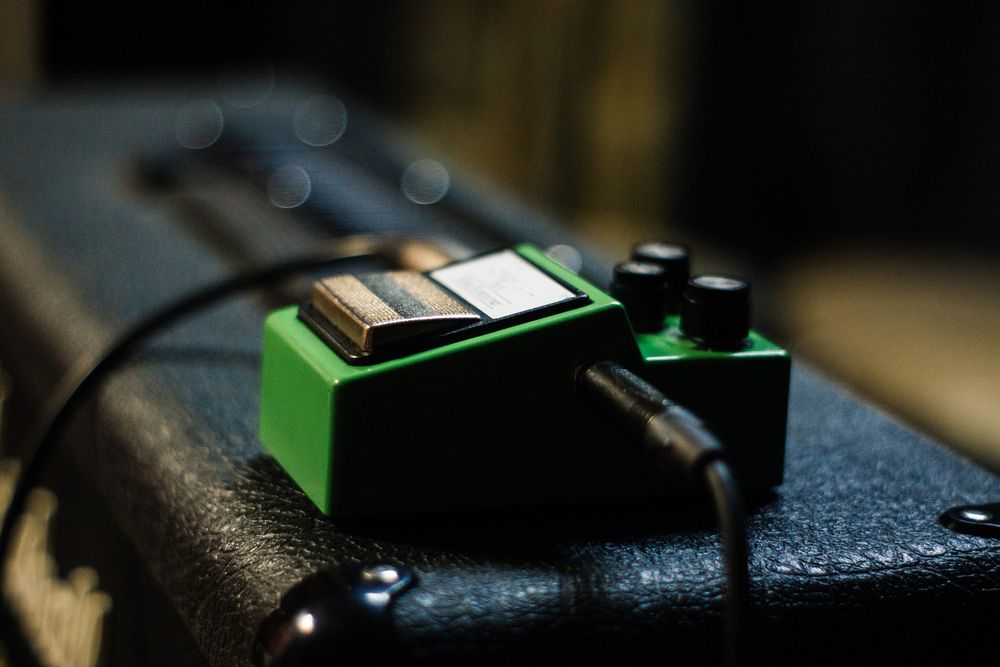13. Distortion
Distortion
Heavily Overdriven Sound
A distortion pedal cranks up the distortion way higher compared to an overdrive pedal. It's not so much about controlling the sound through your playing technique or tweaking your guitar's volume knob. Rather, it's all about creating a sound with loads of sustain and a nice, consistent compression, even when you're letting a chord fade out. If you're chasing after those epic sounds like Van Halen or Metallica, then a distortion pedal is your ticket. It's perfect for belting out lead tones where each note really sings, and when you're shredding through solos, you can't get enough sustain.
A top-notch distortion pedal stands out because it keeps things clear even when the distortion is cranked way up. Imagine playing a full A major chord, all six strings. In this scenario, each string's note should remain distinct and not meld into a murky mess of noise. This quality is what we call "sound transparency at high distortion." Good bass reproduction is another crucial element. When you're riffing or slamming power chords on the low E string, you don't want it to turn into a muddled mess, especially when your guitar is tuned to lower pitches. In such cases, it's important to check if the distortion pedal messes with the sound's frequency balance when you kick it on.

When you crank up the gain (go for that high-gain sound), it's pretty normal to get a bit of extra noise in there. But here's the thing, you don't want that noise to go overboard. Some distortion pedals, especially the ones built for intense high-gain action, include a handy feature called a noise gate. It's like a gatekeeper for unwanted noise, helping to keep things in check.
Classic distortion pedals like the Boss DS-1, MXR Distortion+, or ProCo Rat are still being made today and are rock legends. Many other pedals take notes from their designs or get inspired by them. These kinds of distortion pedals usually keep it simple with three knobs: Volume (Level) to crank up or down the overall volume, Tone to mess with the sound's character, and Distortion or Dist to control how crazy the overdrive gets. Yet, you can also find distortion pedals with more tricks up their sleeves. Some bring a two- or three-band EQ to the table, letting you fine-tune your sound. There are even special metal versions that let you handpick and boost or cut midrange frequencies. This is how you can craft that "mid-scoop" sound where a particular midrange note (usually around 800Hz) gets toned down. This is something a basic tone knob can't quite do.
Sound Examples:
Distortion with different settings of the Dist knob (7, 10, 14, 17 o'clock).
Distortion with two different settings in the low-frequency range.
Distortion with different guitar settings: bridge pickup / volume 10 > neck pickup / volume 3.
Metal Distortion
Your Contacts
Product Highlights
Offers
-
Guitar Multi Effects
-
Multi Effect Processors
-
Psychoacoustic Effects
-
Vocalists
-
Voice Processor
Recommended categories
Do you like what you're seeing?






